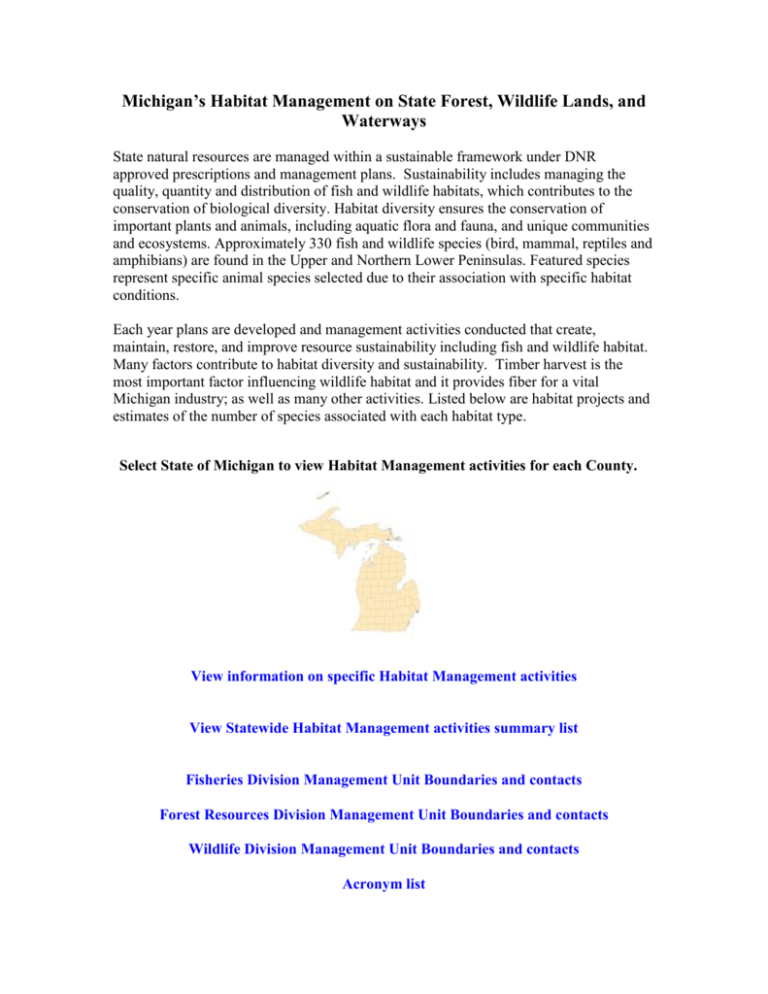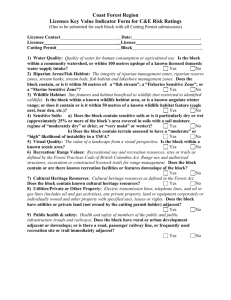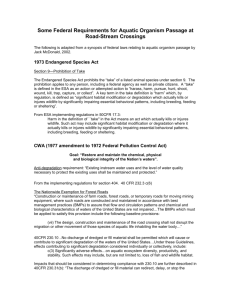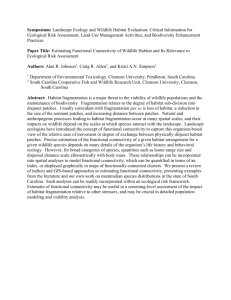Wildlife Habitat Management on State Forest
advertisement

Michigan’s Habitat Management on State Forest, Wildlife Lands, and Waterways State natural resources are managed within a sustainable framework under DNR approved prescriptions and management plans. Sustainability includes managing the quality, quantity and distribution of fish and wildlife habitats, which contributes to the conservation of biological diversity. Habitat diversity ensures the conservation of important plants and animals, including aquatic flora and fauna, and unique communities and ecosystems. Approximately 330 fish and wildlife species (bird, mammal, reptiles and amphibians) are found in the Upper and Northern Lower Peninsulas. Featured species represent specific animal species selected due to their association with specific habitat conditions. Each year plans are developed and management activities conducted that create, maintain, restore, and improve resource sustainability including fish and wildlife habitat. Many factors contribute to habitat diversity and sustainability. Timber harvest is the most important factor influencing wildlife habitat and it provides fiber for a vital Michigan industry; as well as many other activities. Listed below are habitat projects and estimates of the number of species associated with each habitat type. Select State of Michigan to view Habitat Management activities for each County. View information on specific Habitat Management activities View Statewide Habitat Management activities summary list Fisheries Division Management Unit Boundaries and contacts Forest Resources Division Management Unit Boundaries and contacts Wildlife Division Management Unit Boundaries and contacts Acronym list











